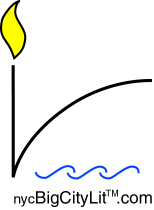Most of us think of ecphrasis as the literary tradition of writing poems based upon paintings or other works of art. The portrayal of a fictive scene, for instance, the parade of the Seven Deadly Sins in Spenser's Faerie Queene (Book I) or the description of Achilles's shield in The Iliad, is also considered ecphrastic, as is the rendering of mental pictures or images, of abstract ideas, and of states of emotion.
The term is quite broadly defined as "an extended and detailed literary description of any object, real or imagined" (Oxford Classical Dictionary), which allows it to be applied in multiple ways, though it is typically associated with writing based on works of visual art. In ancient rhetoric ("ekphrasis"), it was used as an exercise to develop verbal skills of persuasion. In the poetic context, the writer sought to construct "vivid descriptions intended to bring the subject before the mind's eye" (Aristotle's Poetics: Imitation). "Russet lawns and fallows gray" enhance the emotional environment in Milton's "L'Allegro" for a mood enlivened by figures: '…How Faery Mab the junkets eat, / She was pinched, and pulled, she said,…/ Tells how the drudging goblin sweat / to earn his cream-bowl duly set'). (Compare "Il Penseroso": 'Come, pensive Nun, devout and pure').
Writing a poem based on a painting may seem quite similar to the artist's practice of choosing subject matter from literature, myth, religious texts, or historical events and 'transferring' it to canvas. Mainstream criticism does not recognize this equivalence, inasmuch as it derives from a misreading of Horace's phrase, Ut pictura poesis ('As is poetry, so painting.')
That 'painting is mute poetry and poetry a speaking picture' was a popular Renaissance notion, carried forward by Sir Philip Sidney and Ben Jonson, through the Romantic Movement and into the twentieth century—to the dismay of modern critics. A painting is perceived by the eye, taken in as a whole, with immediate impact. Poetry can 'paint' a word picture, but does so only gradually through the use of signs, and must rely on the imagination. This difference of experience has served as the basis for the argument that painting is the superior art to poetry—and vice versa.
The problem, if we should call it that, is a philosophical, aesthetic, and perceptual one, exacerbated by Plato's idea that a chair is not the 'real' chair, but actually one step removed from reality. He would also disapprove of the exhortation to the writer (the later distorted Aristotelian description of mimesis): "Go out and 'hold a mirror up to Nature'." Voilà : Two steps removed from 'reality.'
Paintings by the 'Masters' are readily accepted and valued as works of art. Unless the writer is considered a Master, we may hear the complaint: "I can't appreciate the poem without the painting alongside it."
Few would say they can't appreciate Botticelli's "The Birth of Venus" without source material at hand. Or Michelangelo's David, Dali's Crucifixion, or the battles of Delacroix. Should we have just read Romeo and Juliet before we listen to Tchaikovsky? Do we need to know which, whether landscapes or portraits, are displayed to enjoy Mussorgsky's "Pictures at an Exhibition"? Who wants an illustrated "Self-Portrait in a Convex Mirror" (Ashbery) or "Ode On a Grecian Urn" (Keats)? Subject matter, necessary to all artists, must rise above the level of mere exercise. If the poem is successful as poem, we will value it for itself.
Auden's "Musée Des Beaux Arts," based on Pieter Brueghel's Fall of Icarus, is a good example of the simplicity and complexity of the ecphrastic poem. The poem, set in the museum in Brussels, contains references to other works by the painter, to Ovid's myth, as well as to Christian imagery.
The language remains fairly simple, even colloquial ("Where the dogs go on with their doggy life"), contrasting the ordinary with the extraordinary; not an indifference to suffering, at least not by the Old Masters. He gives us 'the big picture' in a handful of lines. Brueghel's Icarus is mentioned casually, directly, as we are made to see (at lower right):
the white legs disappearing into the green
Water; and the expensive delicate ship that must have seen
Something amazing, a boy falling out of the sky
In "The Unknown Citizen," not based on a work of art, Auden presents a portrait of a state bureaucracy with Orwellian overtones. With hardly an image, we get the picture easily, and its chill ironic: a marble monument dedicated to 'JS/07/M/378.' The headless torso of Apollo scrutinizes Rilke from every contour of its glowing flesh: "there is no part of him / that does not see you. / You must change your life." (transl. MH)
John Hollander's recent anthology, The Gazer's Spirit, Poems Speaking to Silent Works of Art (Univ. of Chicago, 1995)—art work included—has attracted critical attention, reviews by Harold Bloom, Helen Vendler, and others. The Poet Dreaming in The Artist's House: Contemporary Poems About the Visual Arts (Buchwald & Roston, Eds., Milkweed Editions, Minneapolis, l984) features contributors Edmund Pennant, Alice Fulton, Katha Pollitt, Edward Hirsch, with selected illustrations. These are good reference works on ecphrasis, and are worth the read. There is at least one online journal devoted exclusively to ecphrastic works. A recent event featured artists Max Gimblett and Archie Rand and writers Eileen Tabios
and John Yau (Dec 2001 Asia Society/Asian American Writers Workshop).
We begin this month's anthology with master poems in the ecphrastic tradition, next offering individual contemporary poems, and finally, a group of pieces from six specialists, all of whom have written cycles or otherwise concentrated on this form, including Tom McCarthy's original turn in this issue's 12 Section.
Special thanks go to Andrew Dintenfass (Terry Dintenfass Gallery) for permission to use Arthur Dove's "South Farm House", to Pico Reinoso, and to David Tunick (David Tunick Gallery).
—NJ


